Have you ever Googled phrases like, “What’s the weather today,” or “How old is Tom Hanks?” These are examples of zero-click searches in search engines.
This is when you get an answer to your query and do not need to click through to an article. In fact, there is sometimes no article to click through to, even if you wanted to.
This blog post explains everything you need to know about zero click searches in SEO and how you can use them to build brand visibility and recognition.
What you will learn:
- What zero-click searches are and how they work
- The different types of zero-click SERP features with examples
- How to optimize for zero click searches on Google
What are zero-click searches?
Zero-click searches are user searches that give an answer to a query or provide a search result that does not require the user to click through.
For example, many informational search queries are zero-click searches. The keyword “time in Tokyo” displays an answer to the query and does not require the user to click through.
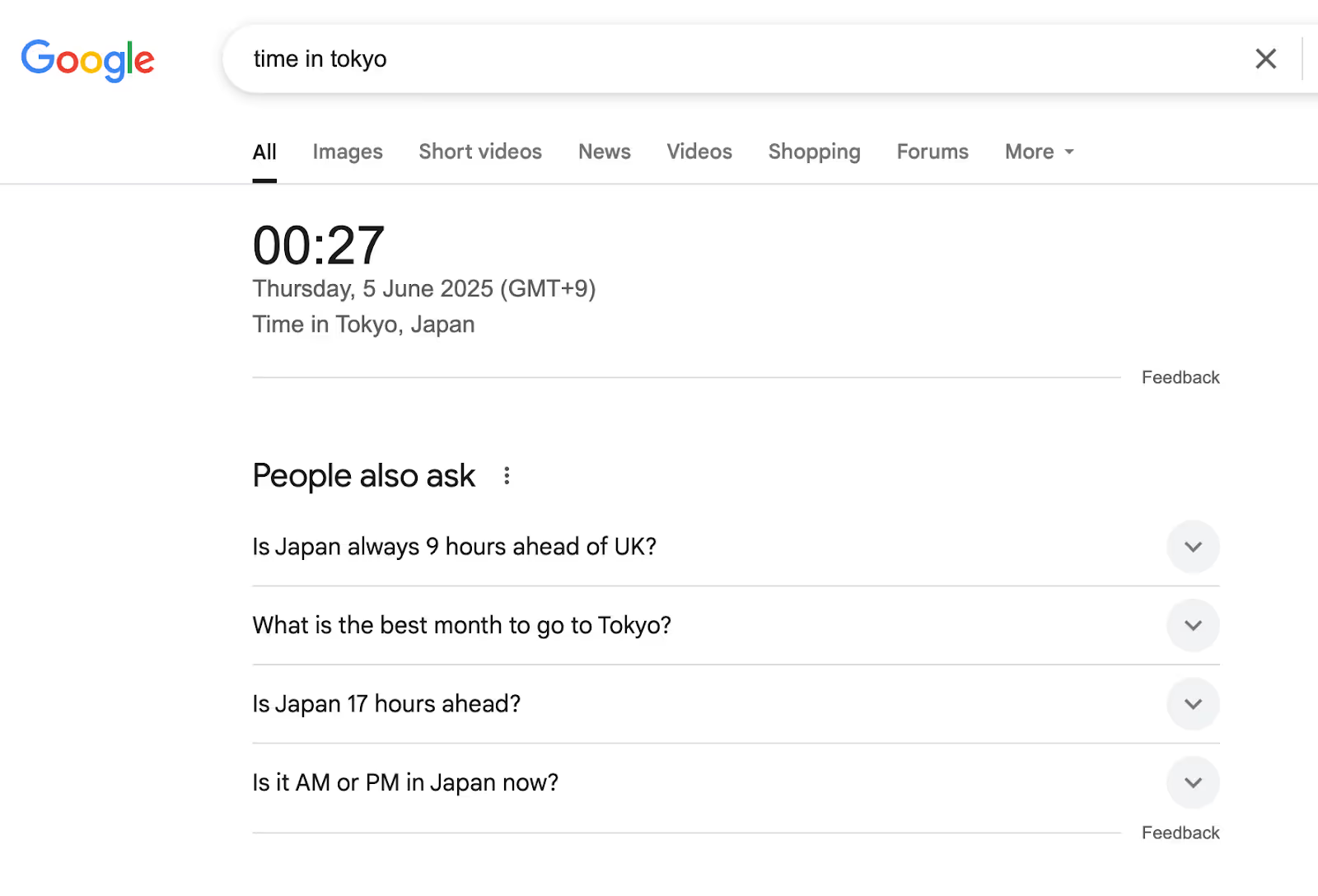
Another example could include, “weather today” or “calories in a banana.”
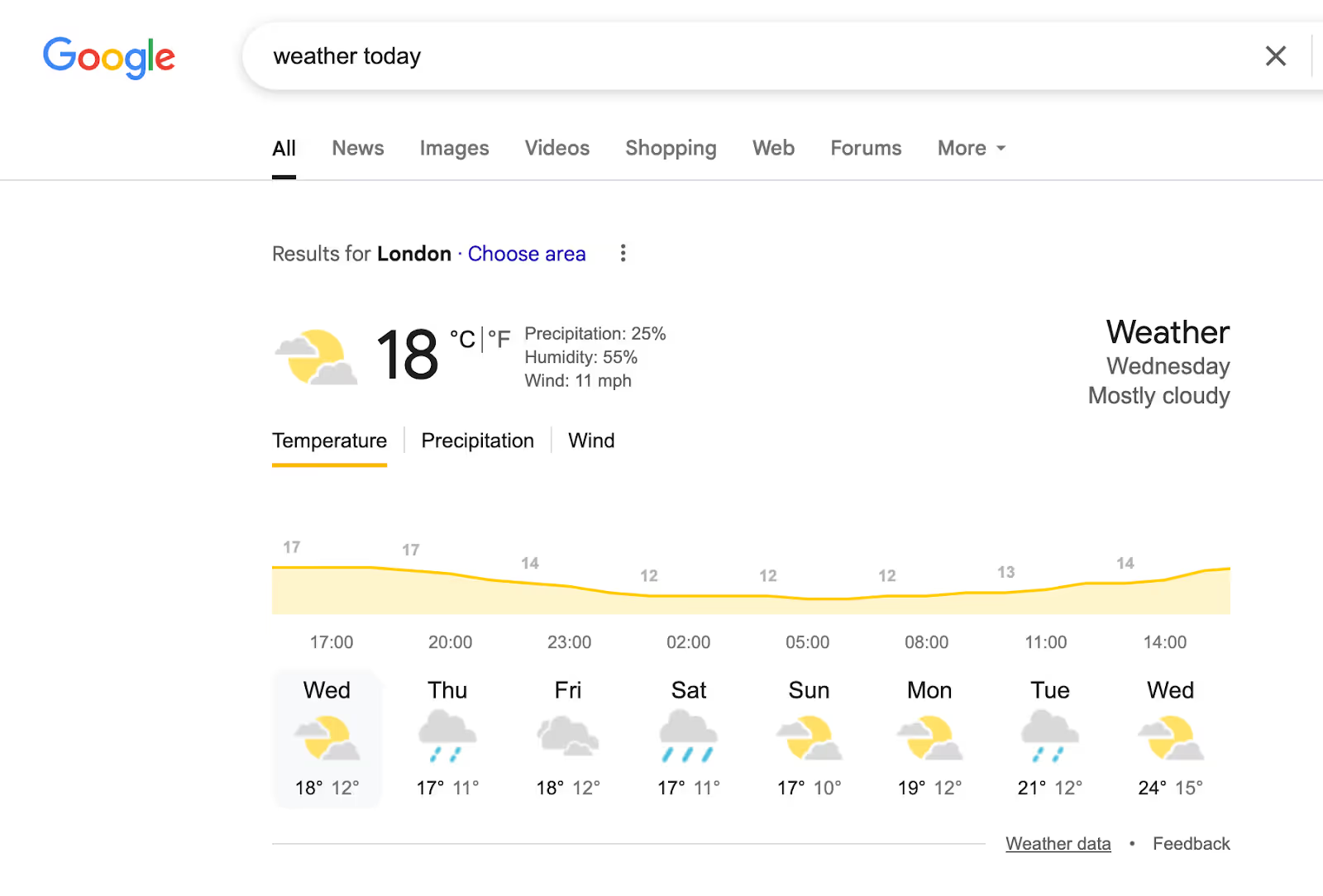
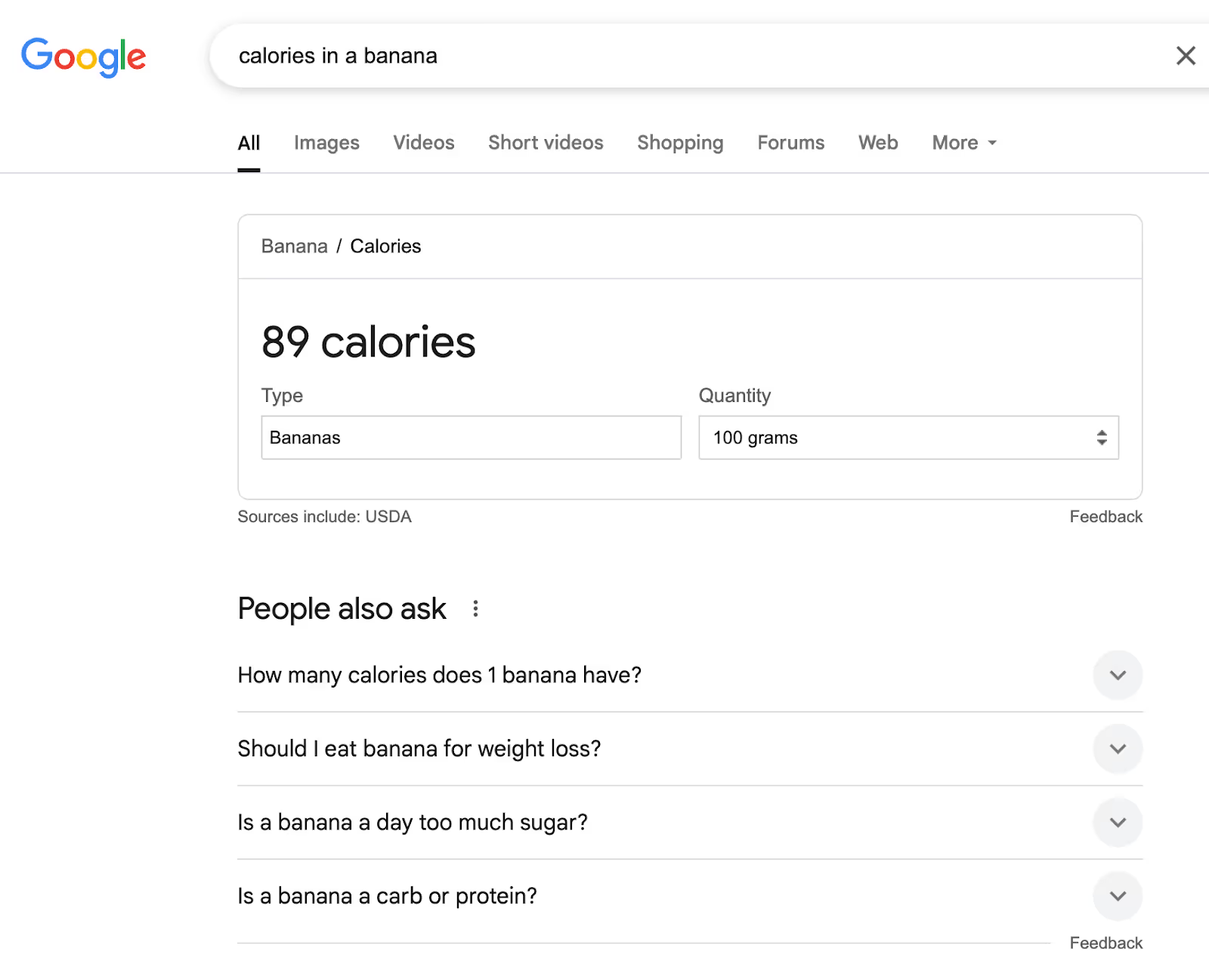
Why do zero-click searches matter for SEO?
If users don’t click through to your webpage, why do zero-click searches matter for SEO?
By targeting zero-click searches, you can increase brand visibility and recognition. People may not click through to your webpage, but some users may still engage with your brand at a later date.
If a user consistently receives high-quality answers to their queries, they may become curious and wish to view more content from your brand or website.
To add to this, you may have realized that click-through rates (CTRs) are down for a lot of websites right now.
Ahrefs found a 34.5% drop in position 1 CTRs when AI overviews were present, based on an analysis of 300,000 keywords. When combined with featured snippets, Amsive found an average 15.49% CTR drop, based on an analysis of 700,000 keywords.
Here’s an example for the keyword “ways to grow an email list” with a comparison table comparing traditional search results and a zero click AI overview.
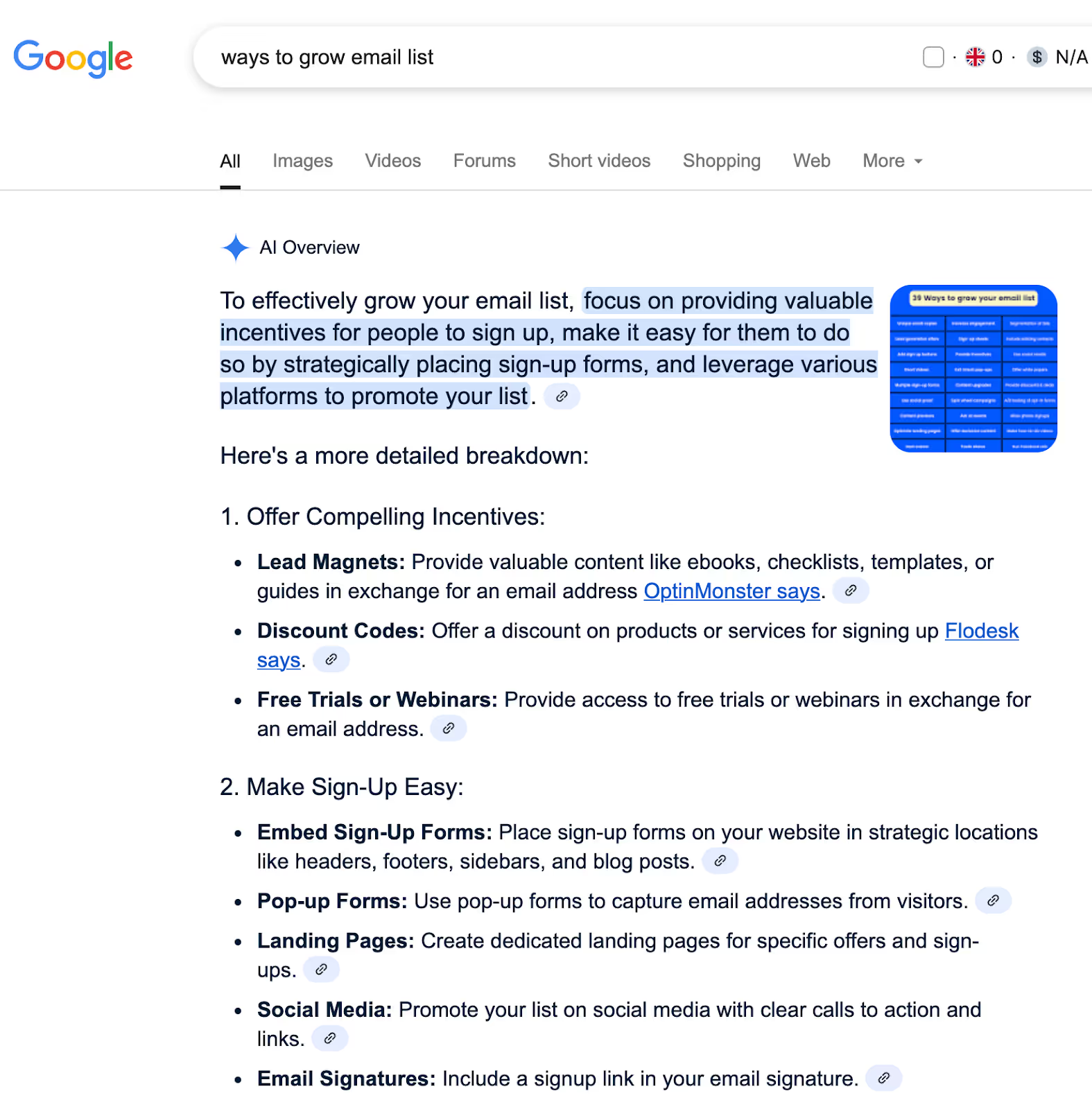
The impact of AI-generated answers in search results
AI-generated answers are transforming how we interact with search. First, we had AI overviews — see the image below for an example — which appear for most search results and are similar to Featured Snippets, but for more queries.
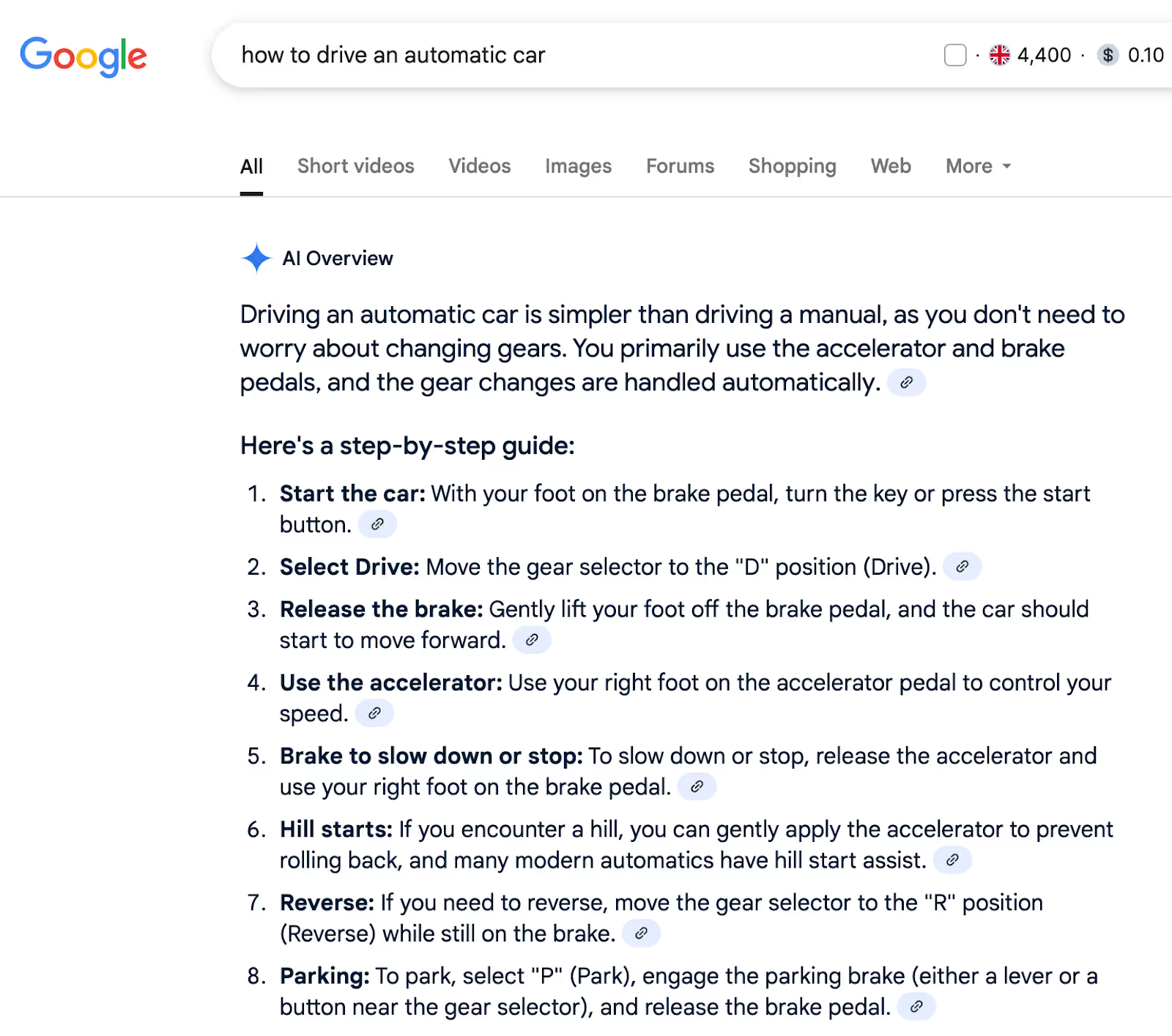
At Google I/O, AI mode was announced — a new search interface that gives you chatbot-style answers, powered by Gemini 2.5. It’s like ChatGPT but a tab in your Google results that answers queries directly and supports follow-up questions like ChatGPT.
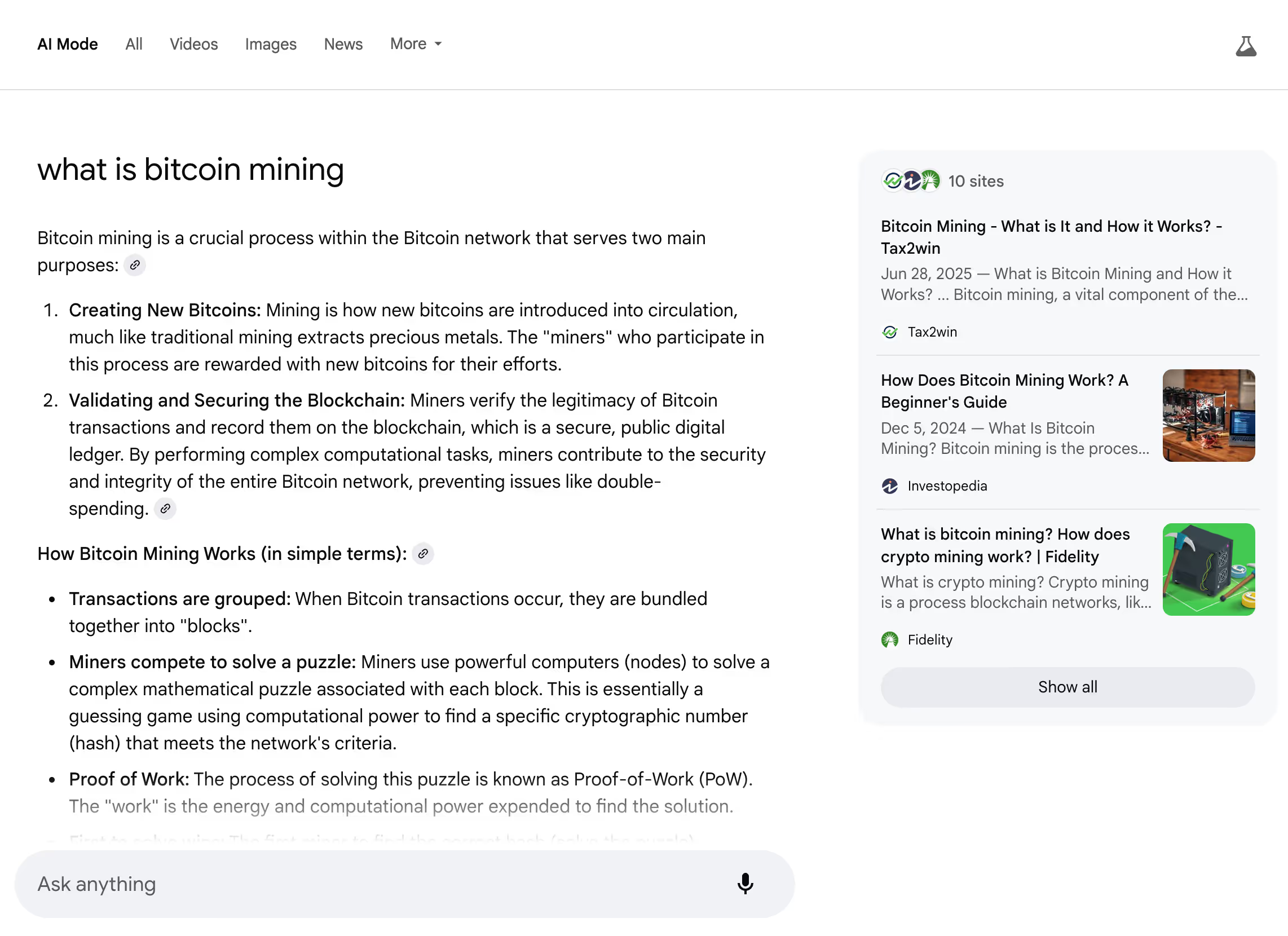
Google’s CEO, Sundar Pichai, says AI Mode leads to searches that are two to three times longer than traditional queries. The problem with this is that there is no separate reporting for AI mode in Google Search Console.
This means there is no visibility into clicks coming from Google’s AI answers and no plans, at least as of yet, to include referral data. It’s impossible to know how many clicks you get from AI mode in analytics tools.
With the current state of search swaying heavily to AI answers, I think it’s more important than ever to optimize for LLMs, zero click searches, and most importantly, make your content stand out when content is easier than ever to create and consume.
Brand voice, personal stories, review and comparison content, expert quotes, and other additions are essential.
I would recommend all readers and SEOs to keep up to date with the changes, especially because they are happening so fast, and move away from traditional KPIs like clicks and track downloads, email sign-ups, and similar metrics.
5 types of zero-click features on Google
There are various types of zero-click SERP features that appear for numerous queries. I explain these in more detail below.
1. AI overviews
AI overviews are the most prominent zero-click features on Google.
When users search a query, Google generates an AI response, taking information from various sources.
For longer queries, they link to top results and sources so users can click through and find out more information if desired.
Here’s an example of an AI overview for the keyword, “What is the best animal to have as a pet?”
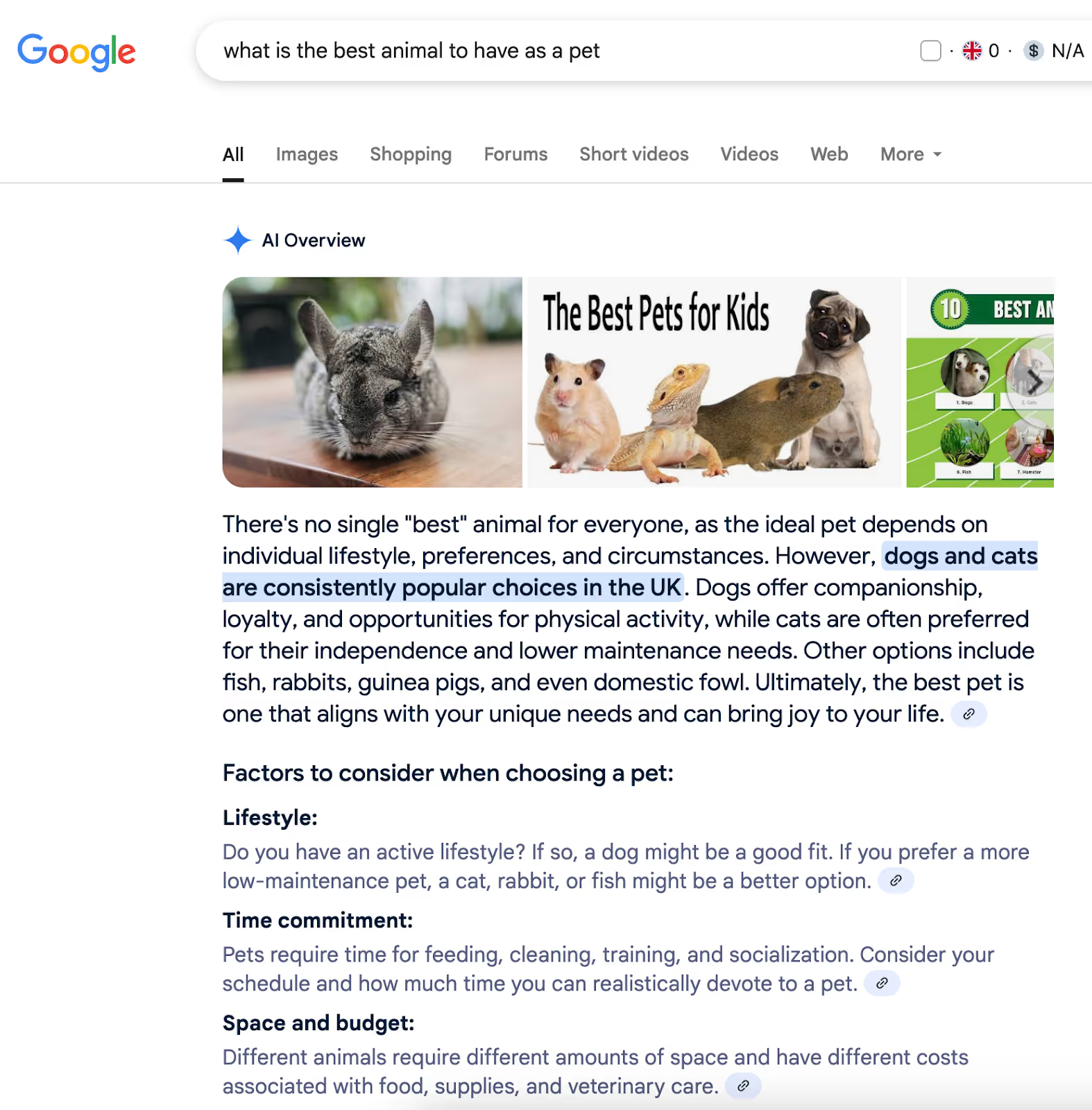
Take a look at this guide if you want to rank for AI overviews.
2. AI mode
AI Mode is Google Search’s newest feature, currently available only in the U.S. but expected to roll out more widely soon.
It offers chatbot-style answers directly in search results — similar to AI Overviews — but with more interactivity. Users can ask follow-up questions, explore related topics, and receive detailed summaries pulled from multiple sources, including data, charts, and key takeaways designed to better match search intent.
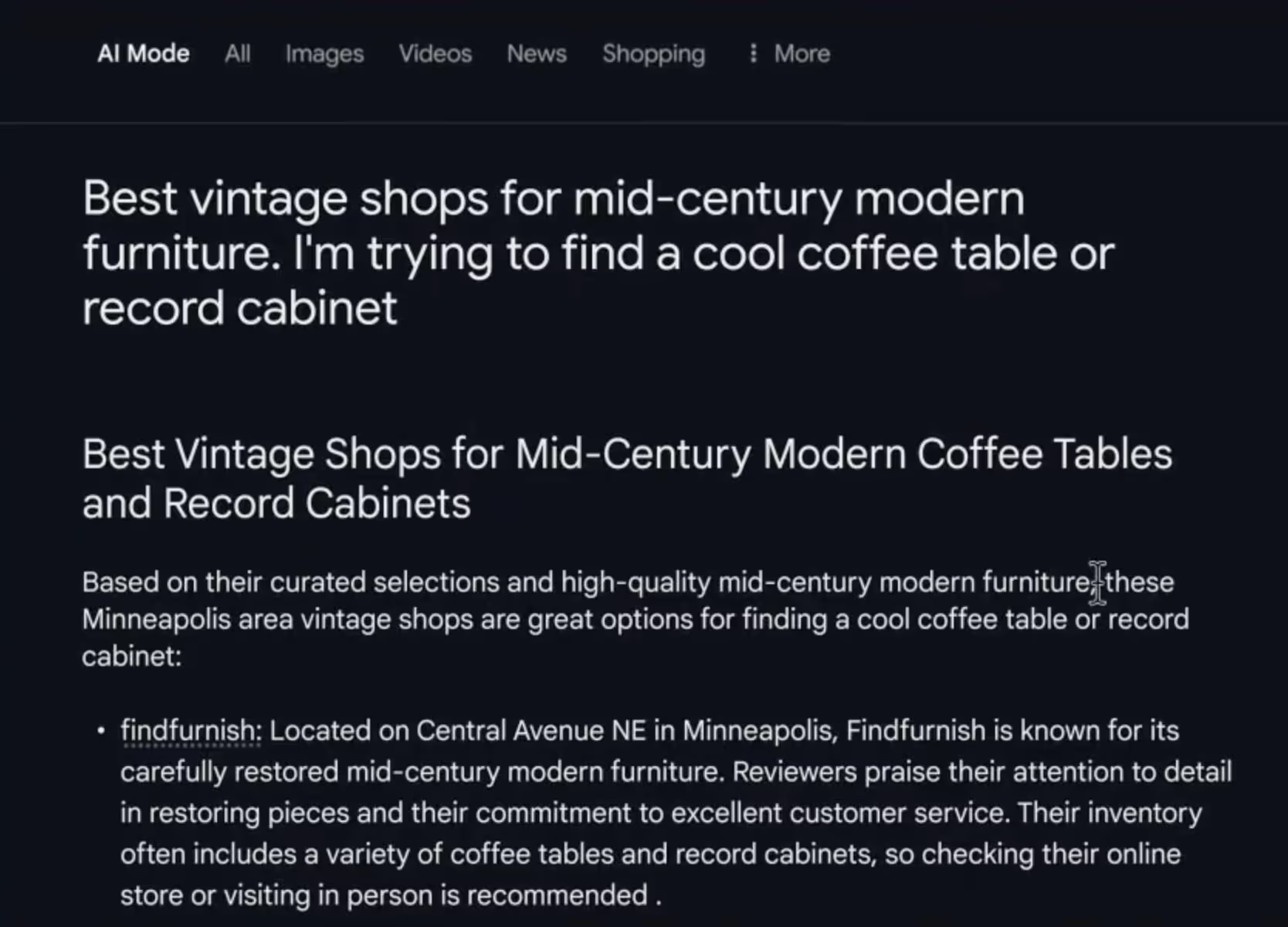
3. Featured snippets
Featured snippets are text taken directly from a website answering a user’s question. These can be a few-line explanations or even a bulleted list.
You may have noticed there are fewer featured snippets — although they still exist — as AI overviews seem to be replacing these.
Ironically, when trying to find a featured snippet example, I came across an AI overview providing a definition of featured snippets.
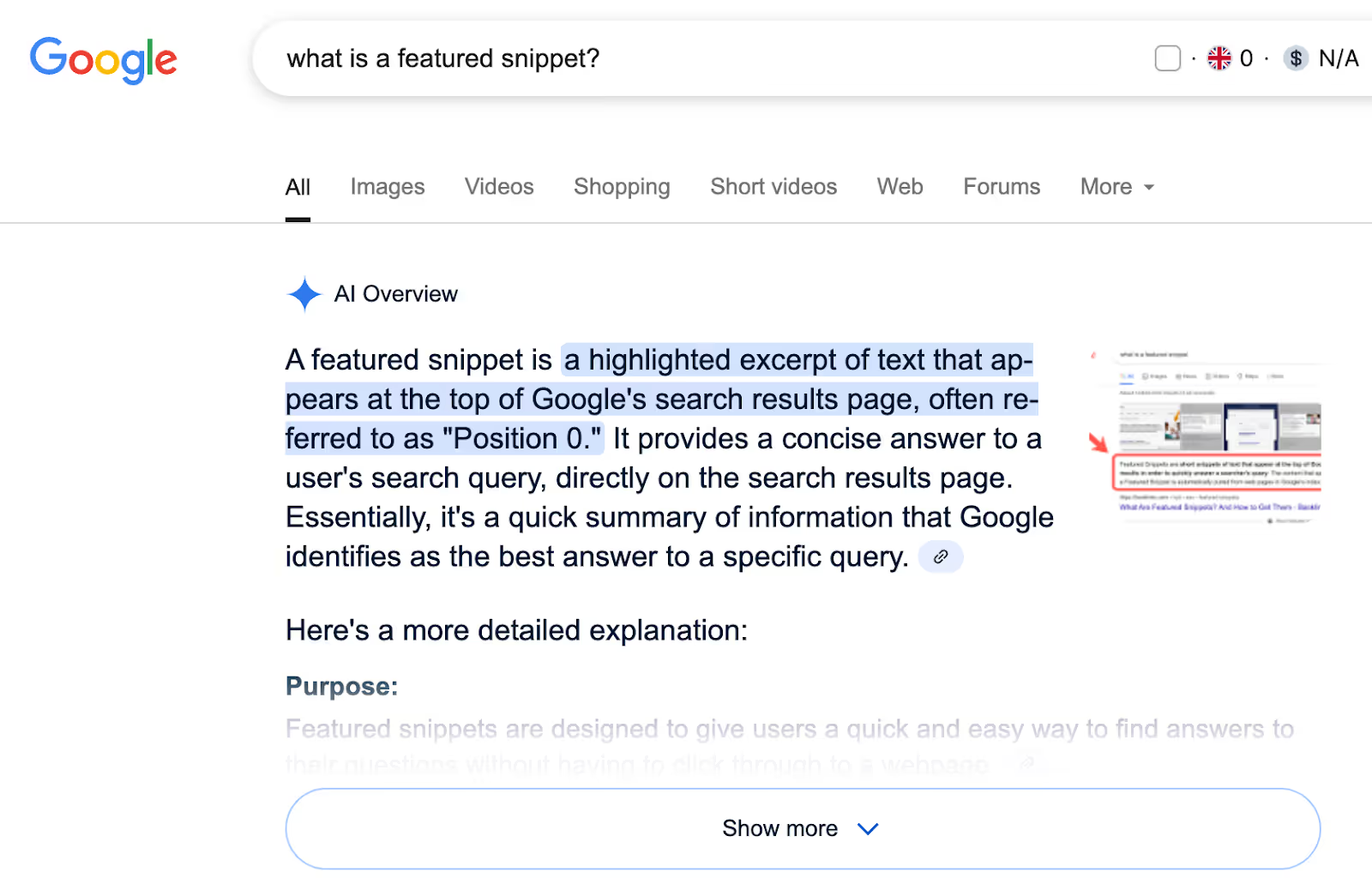
Here’s an example of a traditional featured snippet for the query “how to drive a manual car.”
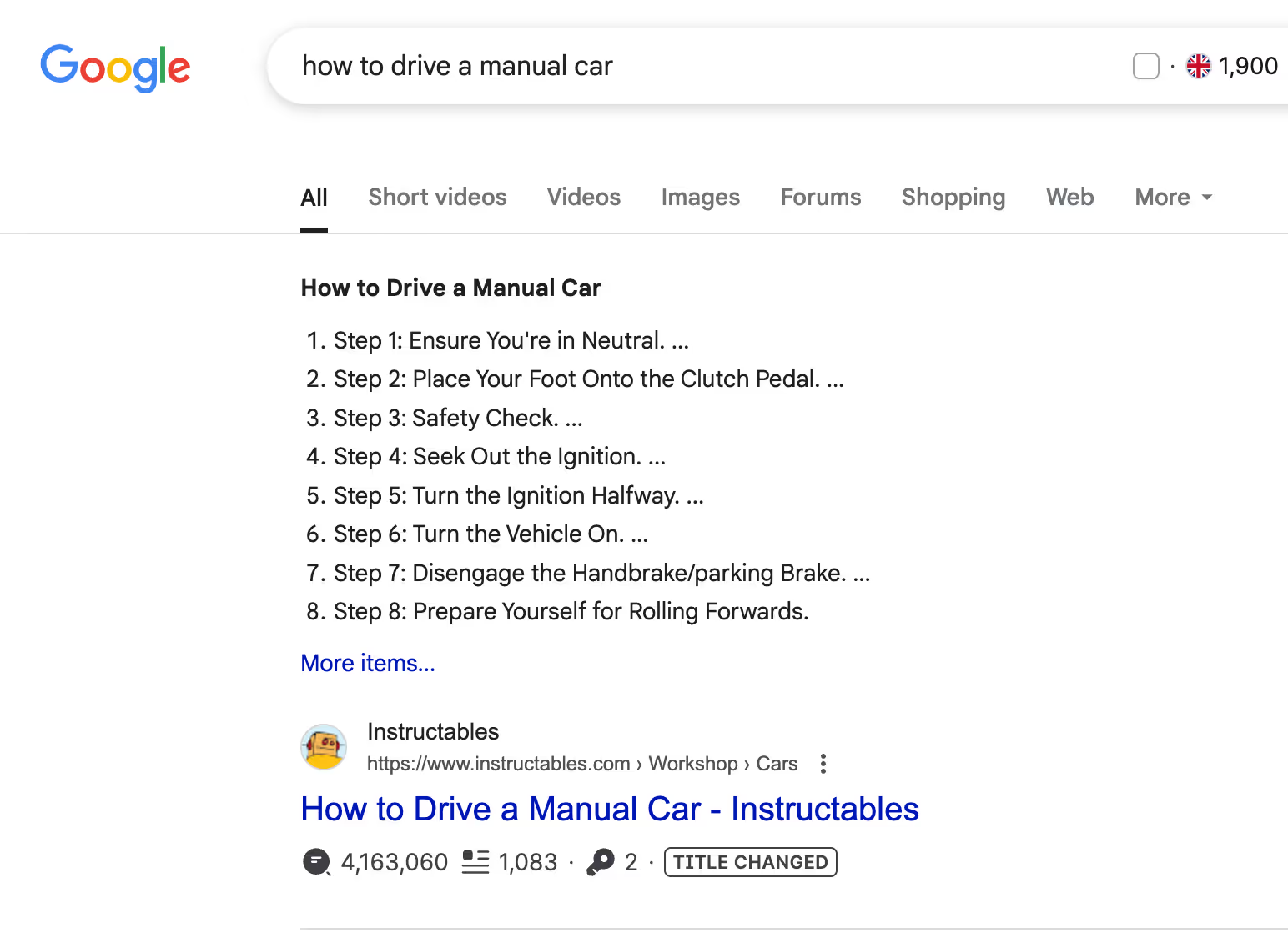
4. Knowledge panels
Knowledge panels are mainly used to provide quick bios and summaries of people, places, and organizations, using Google’s knowledge graph.
Here’s an example zero-click search for the keyword “David Beckham.”
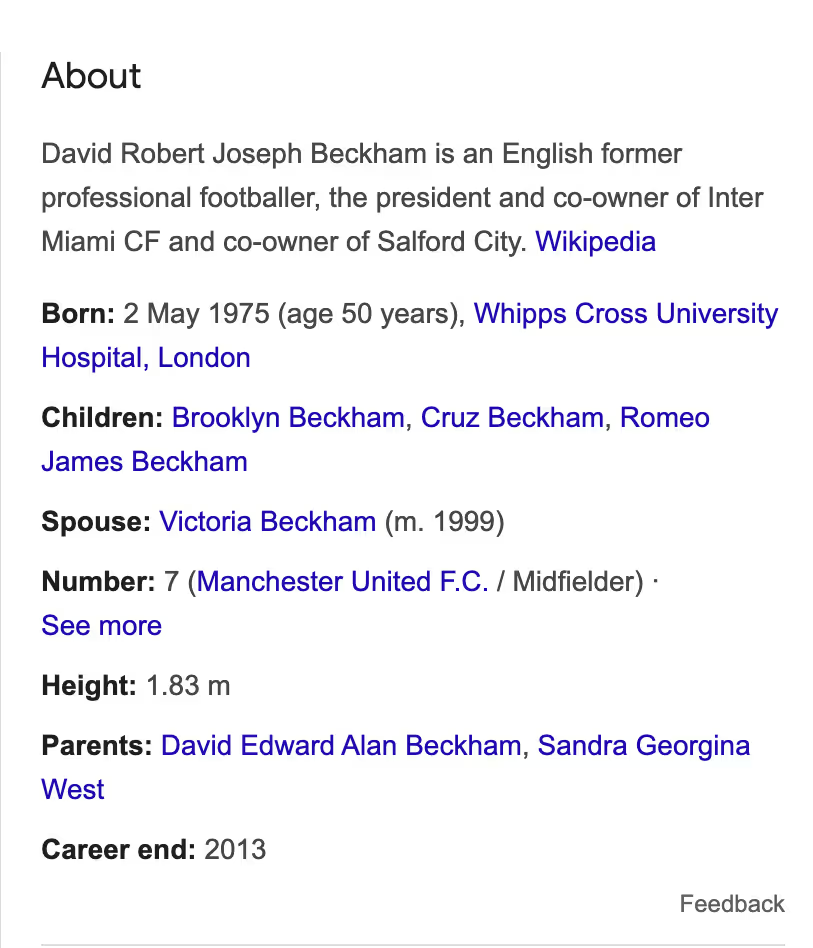
5. People Also Ask
The People Also Ask section, first introduced in 2015, is also a type of zero-click search. But again, if you land a People Also Ask SERP snippet, users might click through to your article to find out more information.
Here’s an example for the keyword, “What is a good first car?”
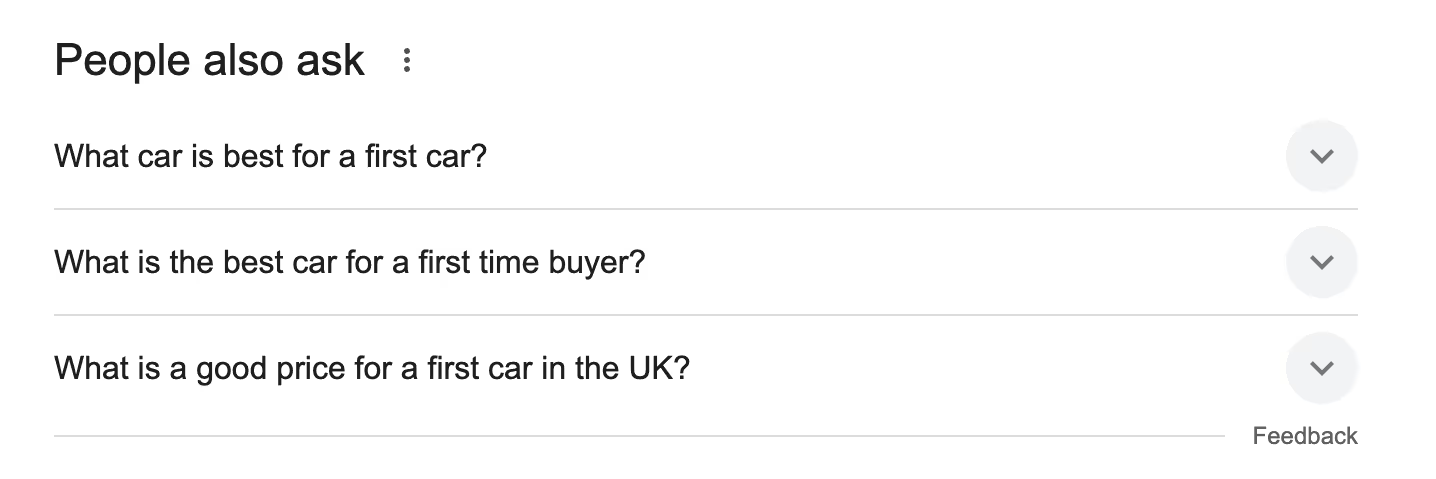
5 steps to rank for zero-click searches
With the increase in zero-click searches, you want to increase visibility in zero-click SERPs.
Here are five steps to plan ahead and land more zero-click searches.
1. Focus on the middle and bottom of the funnel content
To land meaningful queries, shift your strategy from top-of-funnel “quick answer” content, like “how many calories in a banana?” to deeper, informational, and transactional queries where users want to go beyond “what is” answers.
A deeper, more informational query could be, “Are bananas good for runners before a race?” or “best banana smoothie recipes for runners.”
Create comparison, review, and case study content. Focus on various content types that LLMs can’t generate from a general corpus, like your own reviews or evaluations.
This way, you’re not competing for basic queries, but can rank zero-click searches that encourage the user to click your article to read more or take further action.
You can use side-by-side comparisons and tables, visuals, and other decision-making criteria to provide deeper insights into queries.
2. Create original content backed by internal data and research
Publish original studies, case studies, or customer usage data. You can also use anonymized internal data to create charts, trends, and benchmarks unique to your company.
Here’s an example of unique data from Email Tool Tester.
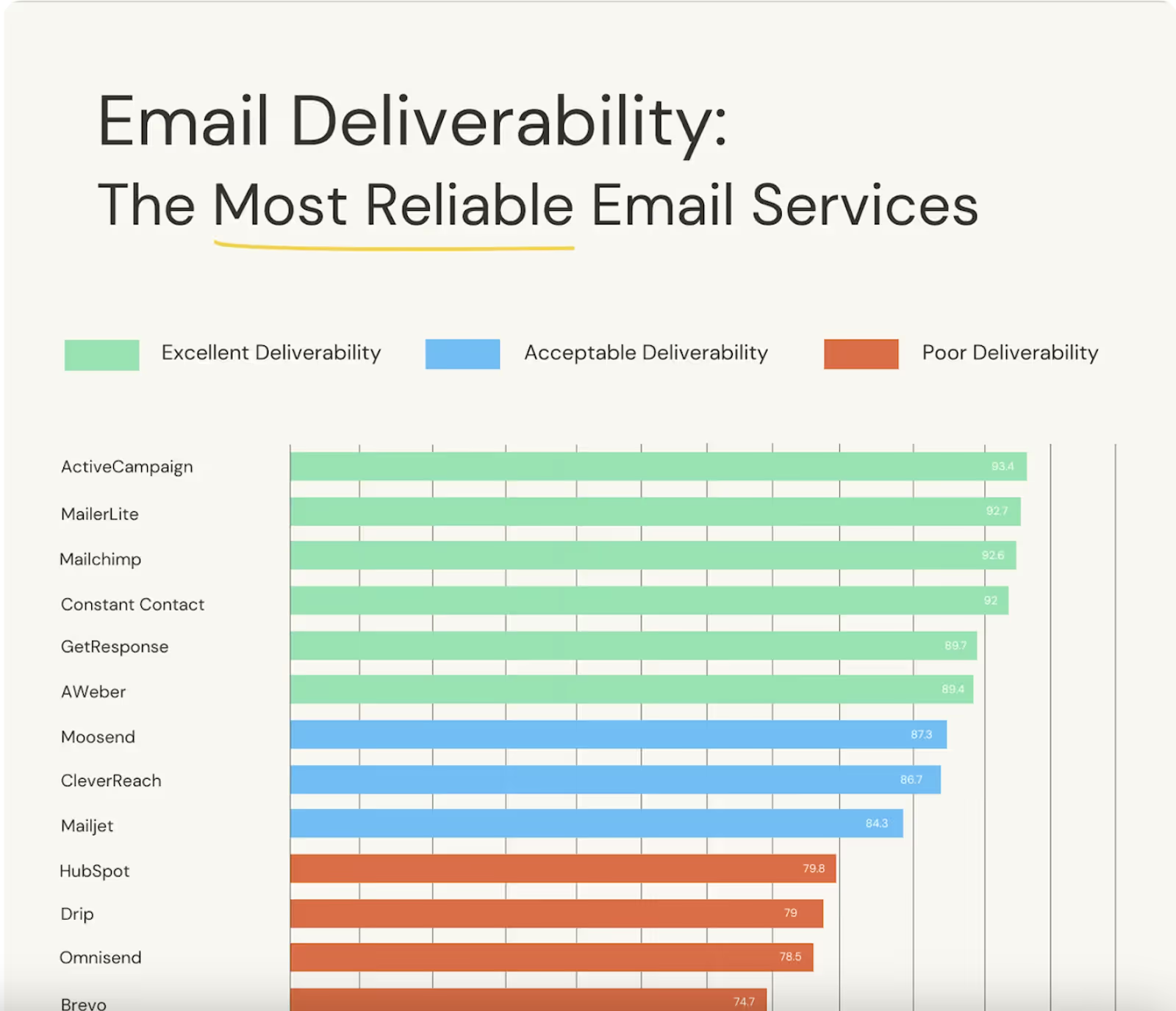
You can highlight stats and content not available anywhere else. And because the content is unique — nobody else can produce this — it gives the LLMs a reason to license your insights.
It doesn’t end there, either. You can repurpose exclusive data, like charts and case studies, into gated lead magnets.
A great example of this is Gallup’s State of the Global Workplace report, which they release each year. To access the report, users need to enter their email address.
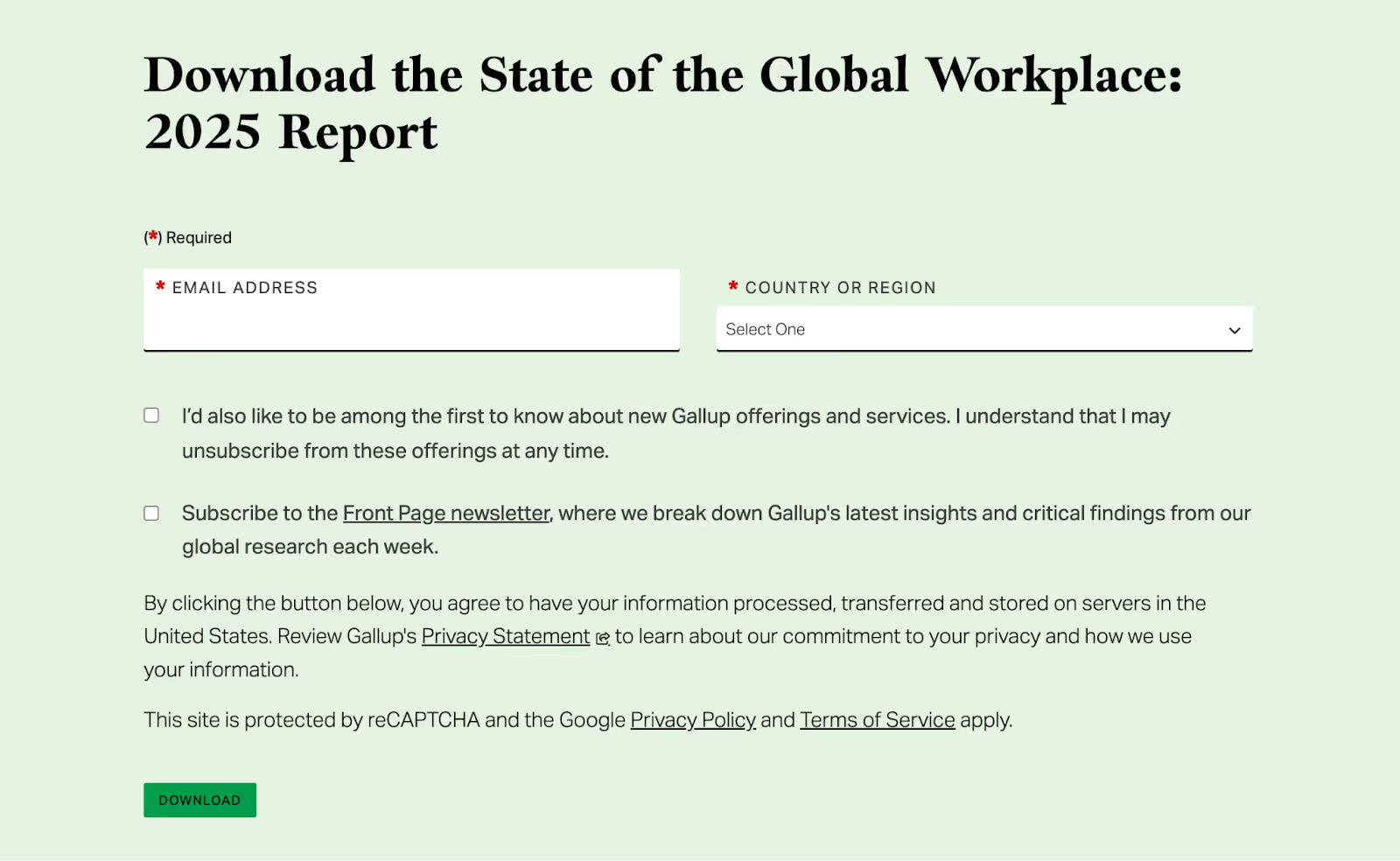
3. Build brand authority and visibility
With an increase in zero click searches, focus on building brand authority and visibility.
You can do this by sharing founder stories, behind-the-scenes breakdowns, and customer narratives, like case studies, which can’t be autogenerated.
To make your writing stand out further, inject tone, nuance, and culture. This will help differentiate it from robotic responses. Adding quotes from experts or founders, if relevant, will help you achieve this.
Here’s an example usage of expert quotes in an article on AI chatbots by Orbit Media.

Consider contributing to other websites and publications as an expert. You can get quoted in the media using websites like Qwoted, whereby you respond to journalists' requests and contribute as needed.
This will also help build backlinks and references from authoritative domains, which will help your content rank better.
Furthermore, by making your authorship visible and appearing across several publications, your credentials and bios will help build trust with your readers.
You may also choose to display user reviews, client logos, and certifications where appropriate to showcase trust, expertise, and authority.
4. Recalibrate for conversions, not clicks
Move away from traffic-based goals and focus on sales-qualified leads, like lead magnet form fills and downloads. Redefining KPIs for SEO will help you better understand your audience and how effective your current marketing efforts are.
If relying on traffic and clicks, you would likely see a reduction in clicks at the moment — this is because of the increase in zero click searches, especially AI overviews.
Segment reporting dashboards by funnel stage and user action to gain greater audience behavior insights.
When users click your website in the SERPs, you want to rebuild on-page value by driving micro-conversions. Think: downloads, newsletter signups, or demos.
Add downloadable versions of full datasets or whitepapers behind an email gate. Write blog posts that tease insights and require sign-up for full access. Own your audience.
For example, HubSpot has an article on how to create a sales plan. You can download a free sales plan template, which requires you to sign up for their mailing list.

Another example is this blog post from Hotjar on how to improve user experience using heat maps. They provide a free demo to use their heat mapping tool, embedded in the post.

5. Answer all kinds of long-tail questions
Long-tail questions are your friend here.
Build a long-tail FAQ knowledge base. Create an exhaustive library of blog posts that answer niche and complex questions your audience is likely searching for.
You can find topics by using forums or asking your sales or customer support teams for the most commonly asked questions and queries.
Deep search in Google AI Mode gives you a deeper search experience with a much longer form response that is fully cited, like an expert-written report. All with lots of citations and links, according to Google.
Elizabeth Reid, VP and Head of Search at Google, says,
“Deep Search uses the same query fan-out technique but is taken to the next level. It can issue hundreds of searches, reason across disparate pieces of information, and create an expert-level, fully-cited report in just minutes, saving you hours of research.”
Organize these FAQ-style posts by intent, and link to related transactional intent, where relevant, in your content.
Make sure to use natural, human-sounding language and provide context-rich phrasing. When explaining a search query, restate the query and explain how it might appear or be phrased in a real search.
For example, for the question “What is the meaning of email list?” the website restates the query in its response.
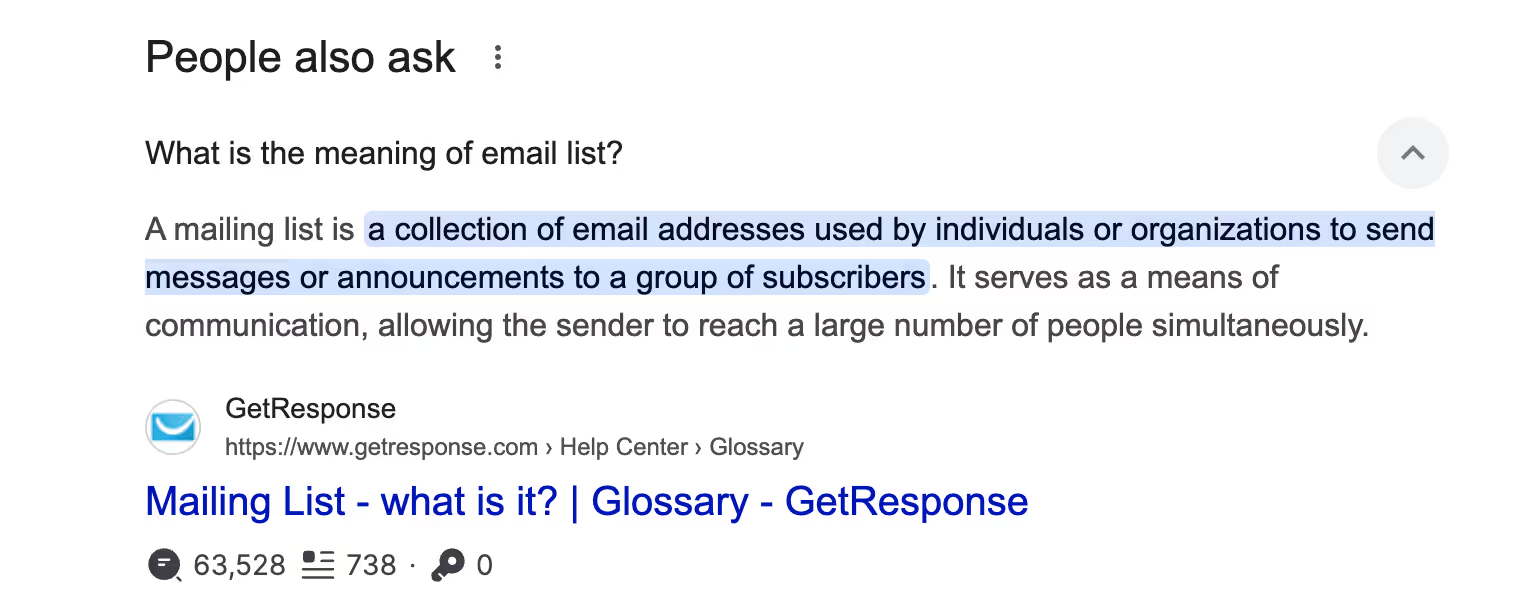
Also, add natural language variations of queries. For example, if someone is looking for the best running shoes for beginners, natural language variations may include, “I’m new to running what shoes should I buy?” or “What are good running shoes if you’re just starting out?”
These will also help match voice search behavior, with users using devices like Amazon’s Alexa or Apple’s Siri.
Include contexts like use cases, edge cases, or industry-specific scenarios. Using the running shoes example, a beginner runner might search a term like, “Best running shoes for flat feet?” or “What running shoes should I wear for a 5k?”
Use tools like Google Trends, Answer the Public, forum sites, and customer research to discover new long-tail opportunities.
For example, I can do a custom Google search for the subreddit r/running, analyzing posts that include the word “running shoes.”
This shows me long-tail queries that real users are looking for answers to.
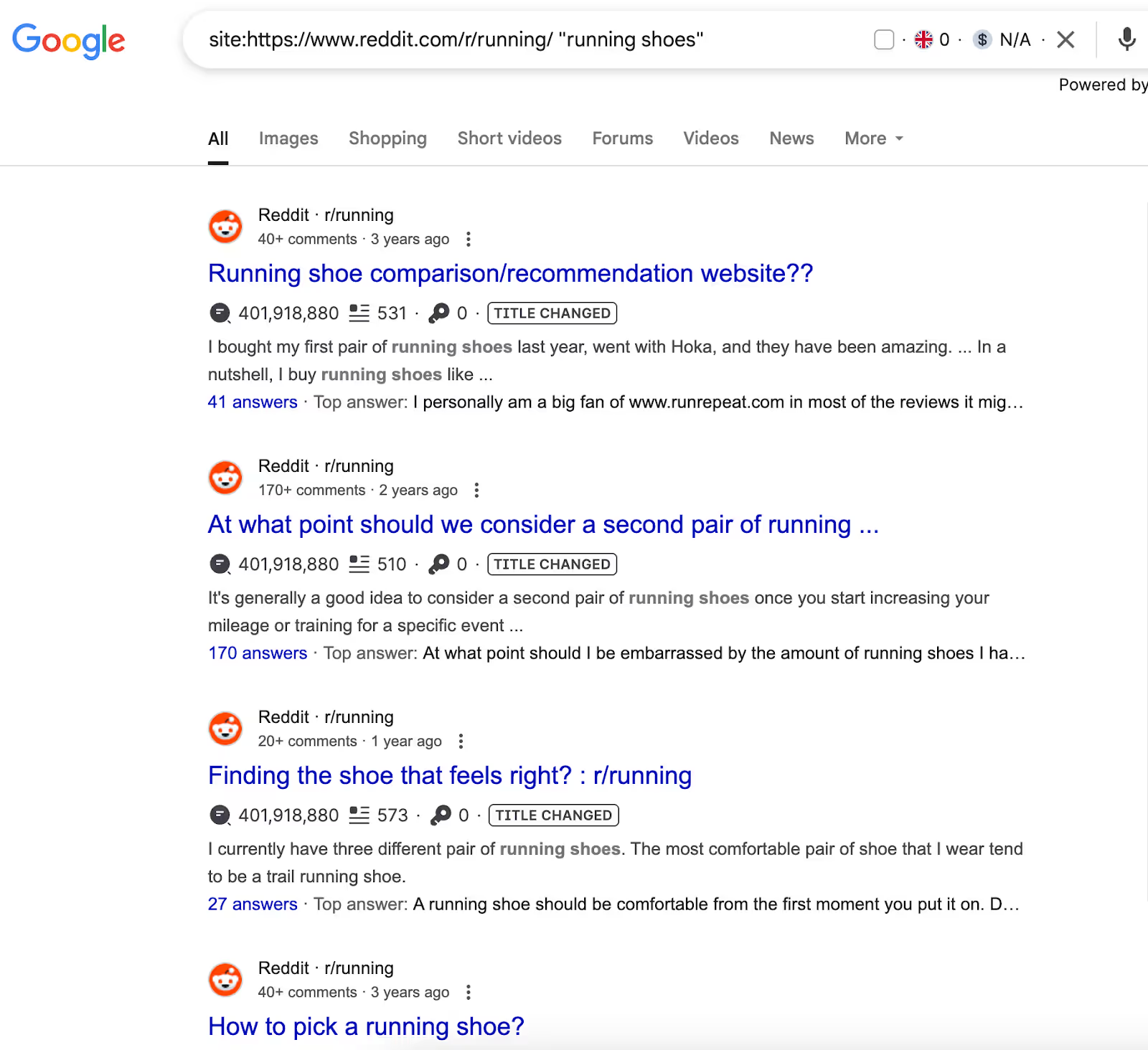
Here are more related queries using Google Trends.
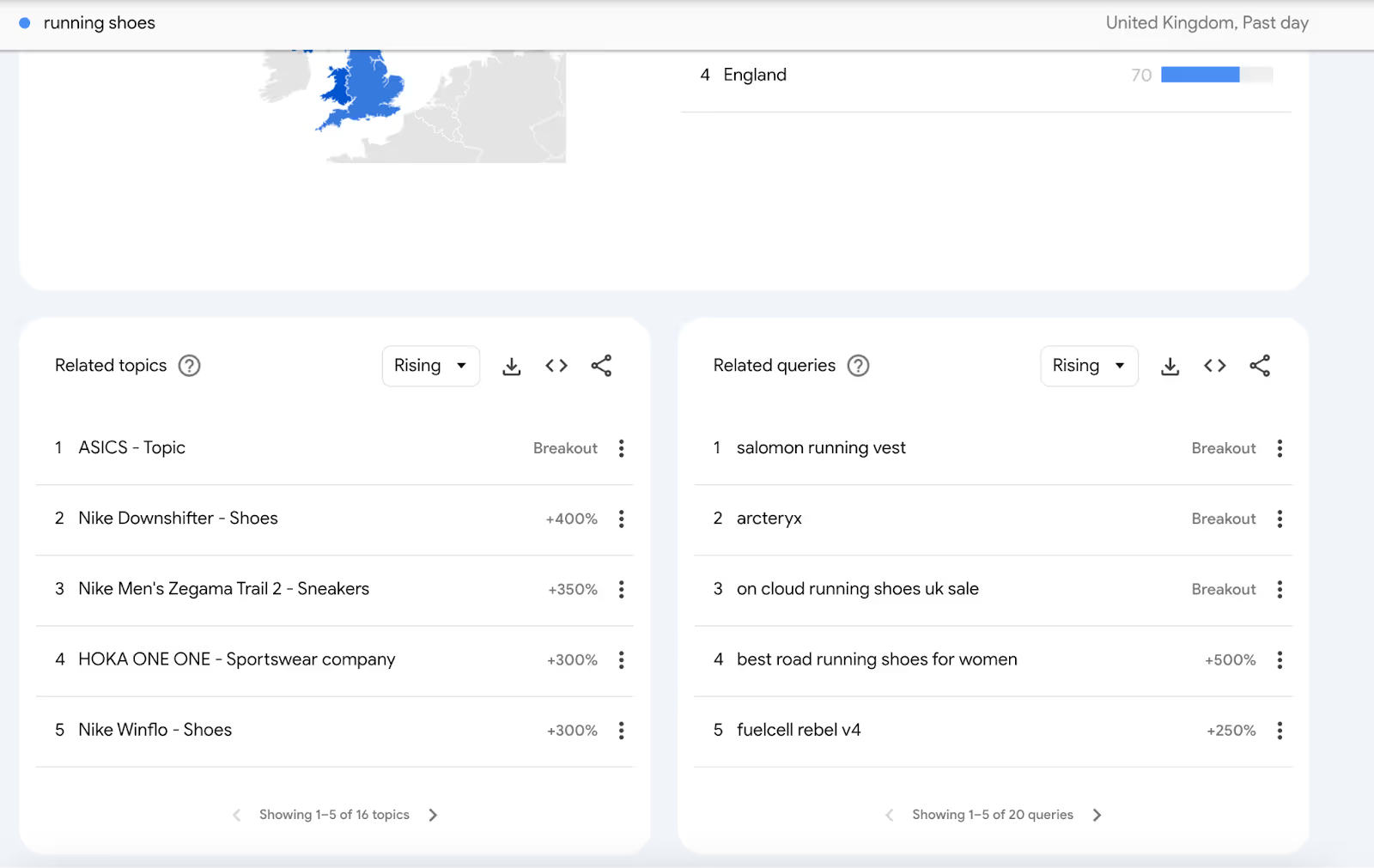
Key takeaways
- Zero click searches provide instant answers to queries and do not require the user to click through
- An example of zero click content is the keyword "how many calories in a banana?"
- There are several types of zero click searches, like AI overviews, AI mode, featured snippets, knowledge panels, and People Also Ask
- Search results pages show numerous zero click search results so it's important to optimize for these user queries
- Focus on middle and bottom of the funnel content, like case studies, reviews, and evaluations to encourage users to click through to your article
- Find ways to add unique research and data — this gives LLMs a reason to license your insights and is an excellent addition to your content strategy
- Build brand authority in the search algorithms by posting high-quality content, even if it includes zero click searches
- Add expert quote and case studies to standout from your competitors (it also makes your content sound more human)
- Shift KPIs from CTRs to downloads and sign-ups to better track SEO and organic traffic conversion results
- Answer all kinds of long-tail questions to increase organic traffic potential and satisfy user queries




.avif)

